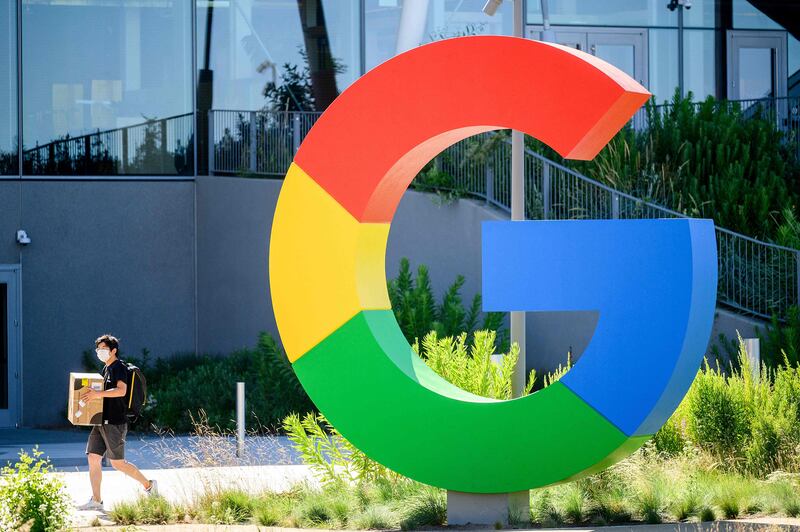The bot rivalry is heating up as Google announced a number of new generative artificial intelligence tools to attract more users and rival ChatGPT, an AI service created by Microsoft-backed OpenAI.
The Alphabet-owned company said it is bringing generative AI to its Workspace suite, first to Gmail and Google Docs.
Users will soon be able to enter a prompt to a blank screen and Google will generate the first draft, followed by automatic brainstorming, editing and rewriting options.
The National looks at Google’s new generative AI tools, outlines their usability for end users and explores if this technology can replace human minds.
How will it work?
Instead of just getting a blank screen on Google Docs, users will see a prompt — “help me write”.
By using the prompts, they can create diverse text such as a customised job description, a goods order placed with a wholesale merchant, or an invitation for a halloween-themed birthday party, and then hit a blue “create” button.
With the collaborative AI tools, users will continue to have options to refine and edit, getting more suggestions as needed.
When will these tools be launched?
Google said it will roll out the new features in phases over the next few months.
“As we embark on this next journey, we will be bringing these new generative-AI experiences to trusted testers on a rolling basis throughout the year, before making them available publicly,” Johanna Voolich Wright, vice president for product at Google Workspace, said.
Google will launch the new tools this month through its trusted tester programme, starting with English in the US.
Based on the feedback, it will enhance the tools and make them available more broadly to consumers, small businesses, enterprises and educational institutions in more countries and languages, it said.
However, Google did not disclose whether these new features will be free, or whether users will have to pay a subscription fee.
Text, images, audio and video
With new features, users can draft, reply, summarise and prioritise their Gmail. They can also brainstorm, proofread, write and rewrite in Docs.
“Finding the right tone and style can also be tricky at times … you are applying for a new job … or you have jotted down a few bullets on your phone from a recent meeting and want to transform them into a more polished summary to share with your team. For these common scenarios, we are adding new generative AI capabilities to help you rewrite,” Ms Wright said.
Users can expand or condense the message, or adjust the tone to be more informal or professional.
With AI tools, users can also add more value to the text by using auto-generated images, audio and videos. They can move from raw data to insights and analysis through auto completion, formula generation and contextual categorisation.
Can Google’s AI replace real humans?
Google stressed that AI is no replacement for the “ingenuity, creativity and smarts of real people”.
It admitted that sometimes the technology gets things wrong and requires human intervention.
“With all this in mind, we are designing our products … [to] keep the user in control, letting AI make suggestions that you are able to accept, edit and change. We will also deliver the corresponding administrative controls so that IT is able to set the right policies for their organisation,” said Ms Wright.
What is generative AI and how big is the market?
Generative AI uses machine learning to produce content such as text, images, video and audio. It can generate novel content, in the right context, instead of merely analysing or acting on the existing data.
The global generative AI market is expected to reach $188.62 billion by 2032, growing at an annual rate of more than 36 per cent from $8.65 billion last year, according to a report by Brainy Insights. The North American region dominated the market in 2022.
More than three billion users already use AI-powered features in Google Workspace, whether it’s through smart compose in Gmail or auto-generated summaries in Docs.
“We are excited to take the next step and bring a limited set of trusted testers a new set of features that makes the process of writing even easier … we will be rolling out these new experiences to testers in the coming weeks,” Thomas Kurian, chief executive of Google Cloud, said.
Explainer: What is ChatGPT and why are academics concerned?







